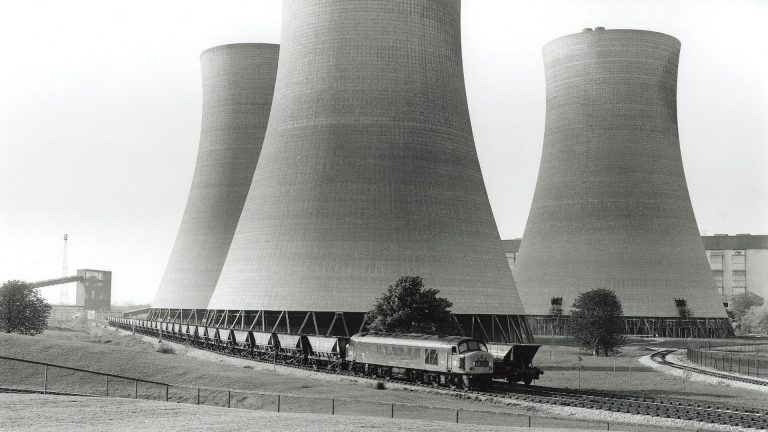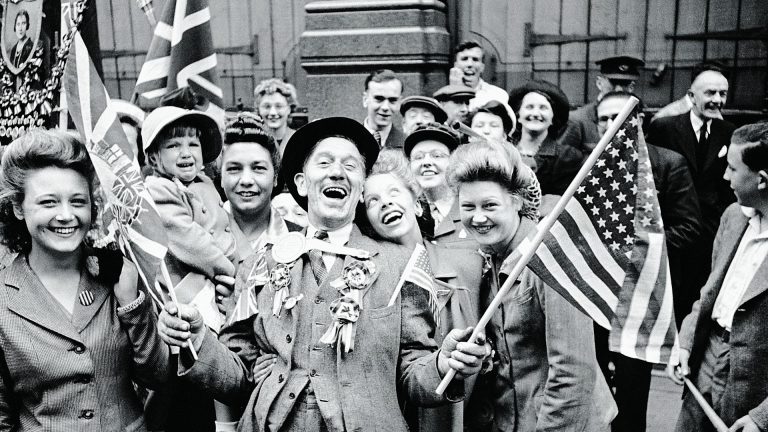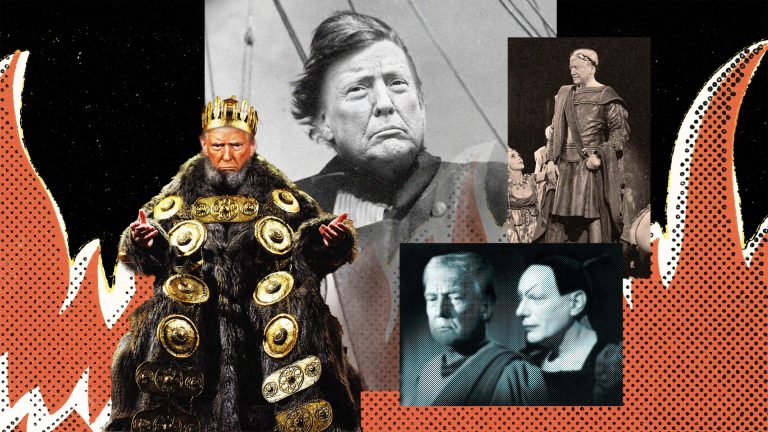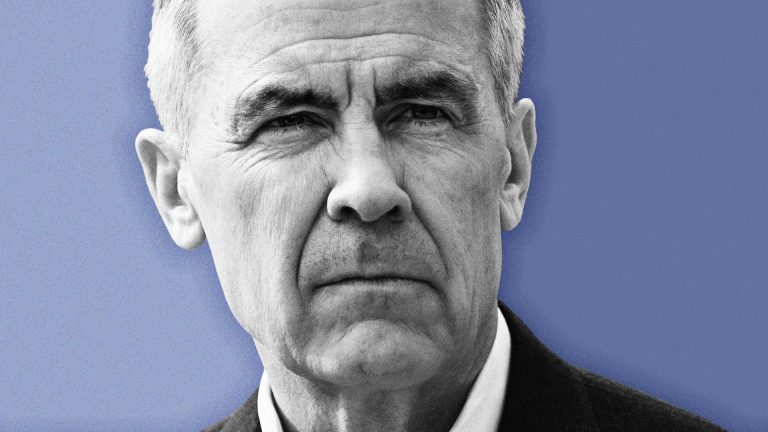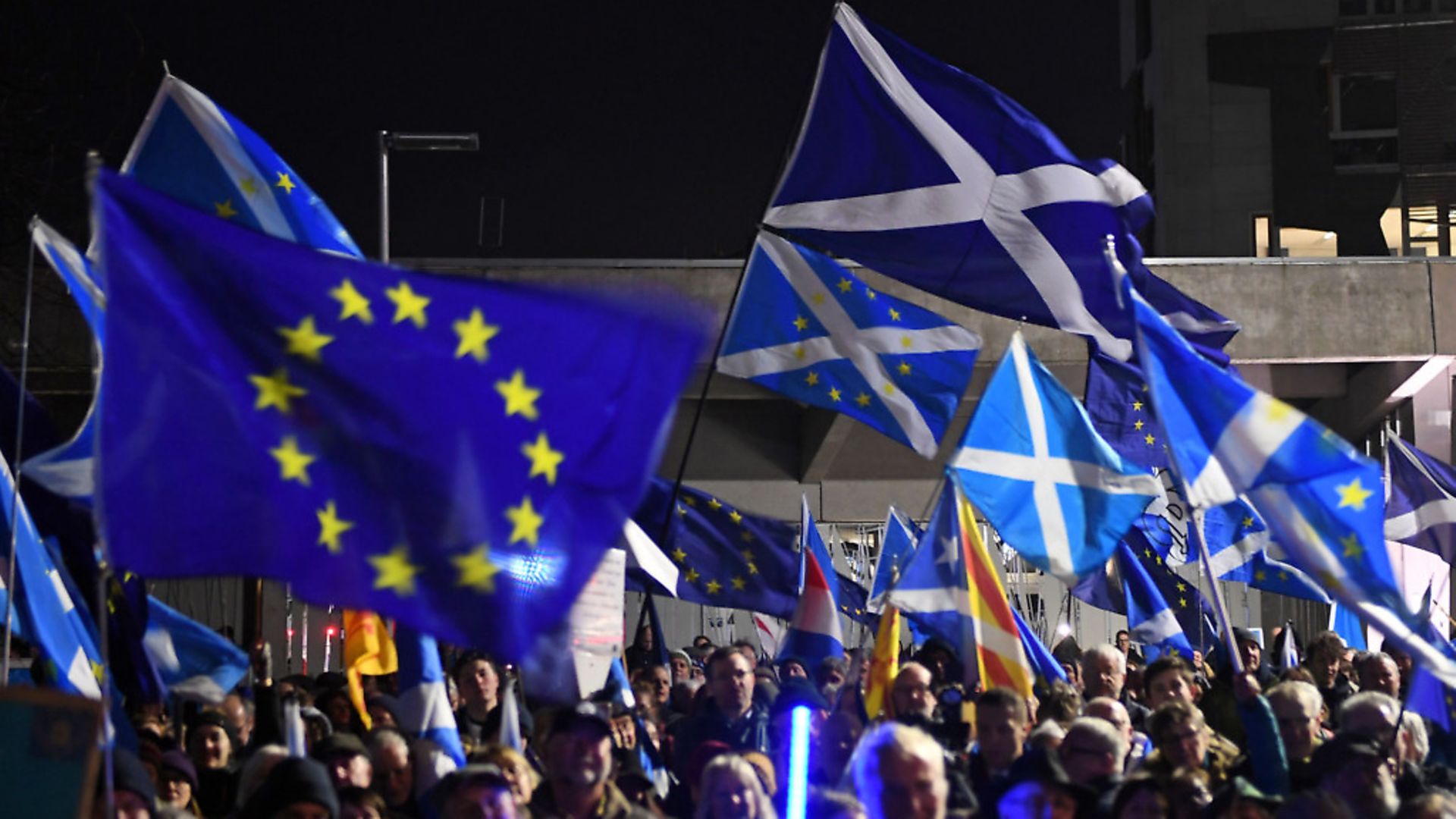
The nationalist parties of Scotland, Wales and Northern Ireland are not only united by their support for the EU, but also their long history of Euroscepticism. SEAN MELEADY explains how all three have come to change their minds on Brussels.
Once dismissed as the ‘Nats’ by BBC pundits on election nights or the ‘odds and sods’ by Labour whips trying to prop up the Callaghan minority government during the late the 1970s, nationalist parties in Scotland, Wales and Northern Ireland have long been derided. However the Scottish National Party, Plaid Cymru and Sinn Fein are all now playing an increasingly important role in British politics.
In Scotland, the SNP have been in government since 2007 and achieved impressive results in recent general elections. Plaid Cymru are the second largest opposition party in the National Assembly for Wales with current opinion polls suggesting they may have a role in a coalition with Labour in Cardiff following the Welsh elections next year. Sinn Fein not only emerged with the largest number of first preference votes in the Irish general election but hold four ministerial positions in the Northern Ireland Executive. They also hold seven of the region’s 18 Westminster seats, and thanks to recent SDLP gains, the majority of MPs from Northern Ireland are now from Irish nationalist parties.
Although all three parties have many differences, all campaigned for Remain in the 2016 EU referendum and have been highly critical of the UK’s departure from the EU. Yet it is not just their support for the European project that unites these nationalist parties – conversely, all three also share a deep history of Euroscepticism, that, in many senses, runs deeper than their more-recently found Euro-enthusiasm.
Indeed, the last time before 2016 that the UK voted in a plebescite on the issue of Europe, in 1975, the SNP, Plaid and Sinn Fein also found themselves on the same side – backing British withdrawal from the then European Economic Community.
So what brought about this collective volte face over the intervening four decades? And which forces that caused it were common to all parties, and which were distinct to each case?
In truth, for the SNP, at least, the change from opposition in 1975 to support in 2016 was not exactly a volte face, rather a return to its roots.
It was founded in the 1930s, and in the period after the Second World War was rather a moderate, centrist party. Inspired by the idealism and romanticism of historic links which had bonded Scotland to the continent, the SNP supported the embryonic European movement, arguing that Europe could offer Scotland a more beneficial partnership than the UK.
However, by the early 1960s the party was losing interest in Europe, as it became clear that Scottish independence was a distant prospect and that the then EEC had no great interest in Scotland.
At the same time, the party’s politics were beginning to reflect an ideological change among its members as, following an influx of ex-Labour supporters and trade unionists, the SNP began to shift to the left.
One consequence was a far more Eurosceptic attitude than the idealism of the previous decade. This new policy was entirely in line with left-wing thinking of the 1960s, including on the Labour left, which saw the European project as a bosses and bankers club, embedding capitalism across the continent.
It was this thinking that still held sway in Scottish nationalism as the 1975 referendum loomed.
Many grassroots supporters argued that the EEC was a bureaucratic and undemocratic entity that would relegate Scotland to ‘the province of a province’.
There were warnings from the SNP about ‘Scotland’s oil’ which they warned could be seized by Brussels. Or at the very least, the party argued, EEC competition rules would prevent Scots using their economic resources in the way they wanted.
However, the 1970s was a decade of great internal strife for the SNP and there was not total agreement in the party on the European issue. Almost half of the party’s 11 MPs favoured staying in the EEC. In the end, the party found itself on the losing side.
Only Orkney, Shetland and the Western Isles voted ‘no’ in 1975, likely due to concerns regarding the fishing industry.
Overall, it was the English who were most enthusiastic for the EEC (68.7% ‘yes’), followed by the Welsh (64.8%). The Scots (58.4%) and Northern Irish (52.1%) were significantly less keen.
Yet with the matter seemingly settled for generations, the focus of Scottish nationalist politics moved to issues like devolution (a 1979 referendum on which resulted in a majority in favour, but below the turnout threshold set by the Labour government).
Europe remained in the background though, and on this subject the SNP began a gradual reversion to its earlier ‘pro’ position.
Ironically it was two men – then leader Gordon Wilson and Jim Sillars – who both voted Leave in 2016 who were responsible for this shift in policy.
In an attempt to end factional warfare Wilson, who led the party from 1979 to 1990, argued that once independence was won Scots would get a say on EEC membership with the SNP campaigning to stay in.
This policy was also sold on the basis that Europe would fork out the start-up costs for independence, therefore negating any negative economic effects. Sillars – a former Labour MP and prominent member of the SNP’s left-wing faction, the 79 Group – similarly argued for ‘independence within Europe’ a policy that was formally adopted in 1989.
While nationalists were once again keen to emphasise historical Scottish links with the continent – most famously the ‘auld alliance’ with France – the new policy was more immediately influenced by the success of Thatcherism and feelings of English dominance.
The threat of an overbearing EEC had driven the SNP towards Euroscepticism in the 1970s. The reality of an overbearing Conservative government in the 1980s was driving them the other way. Scottish nationalists’ ire had transferred from Brussels to Westminster. It has stayed there ever since.
Plaid Cymru’s European journey follows a similar path. The party was founded in the 1920s by a European enthusiast Saunders Lewis who argued that Wales had been one of the ‘founders of European civilisation’ and therefore independence within a continental context was desirable. That said, there was a distinct lack of interest in the subject throughout the 1950s and 1960s, as the party matured.
That changed when the Macmillan government’s application to join the EEC and the election of the first Plaid MP Gwnfor Evans in 1966 rather focused the minds of Welsh nationalists. As in Scotland, earlier, idealistic notions had run up against more hard-headed concerns about European integration.
Plaid indicated that while it wasn’t opposed in principle to a European community of nations it felt that the EEC as it had developed up to that point would be disastrous for Welsh economic and political interests.
These sentiments were reflected in the party’s role in the 1975 referendum, when it had the slogan: ‘Europe YES, EEC NO.’
This opposition was based on three, specific strands. The first was the concern over the lack of representation for Wales within the centralised European institutions.
The second was economic: since its earliest days, the party had reflected strong, left-leaning tendencies based upon principles of decentralisation and cooperation. Plaid leadership in the mid-1970s was also dominated by left-wingers who – as in the SNP and parts of the Labour party – disliked the economically liberal deregulatory policies of the EEC.
And, thirdly, Plaid were also concerned about the development of a common European foreign and defence policy to include support for nuclear weapons. This was not something that the party, with strong pacifist tendencies, could accept.
However, like the SNP, Plaid was not completely united on the issue and a small group of activists campaigned for a ‘yes’ vote, among them Saunders Lewis and future leader Dafydd Wigley.
As we have seen from the 1975 results, Plaid’s Eurosceptic position suffered a heavy defeat. This was followed, in 1979, by a referendum where 79.4% of Welsh voters rejected devolution.
Shortly afterwards, the Conservatives under Margaret Thatcher won the general election and devolution disappeared from the political agenda.
Following these setbacks there was factional warfare in Plaid between the more Eurosceptic left-wing activists centred around the ‘national left’ group and party traditionalists. Those on the left argued that traditional Welsh nationalism, based on cultural and romantic notions, had failed to make progress.
However changes were happening. Plaid unexpectedly polled 11.7% of the Welsh vote in the 1979 European parliamentary elections. There was also further momentum towards a more pro-EEC position with the election of Europhile Wigley as leader in 1981.
Europe was centre stage at the 1983 annual conference where a motion was put forward to reaffirm Plaid’s Eurosceptic position of ‘yes’ to Europe but ‘no’ to the EEC. The result was that outright opposition to the EEC was toned down, and this was reflected in the manifesto for the 1984 European election, where the party again achieved positive results.
The election was another lesson for Plaid’s left-leaning activists, who were coming to realise they were having little impact on British and Welsh politics. This was a failure they had in common with the left more generally, which was failing to offer a coherent alternative to Thatcherism. There was also a loss of faith in state socialist based solutions and the ability to effectively oppose the Conservatives following the defeat of the 1984/85 miner’s strike.
Against this backdrop, Plaid’s increasingly pro-European stance – and its vindication at the ballot box – reduced factional infighting. Moderate and traditionalists in the party had long argued that a completely independent Wales would be impractical and unpopular. European offered a solution, then, providing the prospect of a more realistic framework within which independence could be achieved.
This new strategy appealed to both moderates and radicals as it proposed that Wales should first gain independence within the EEC before participating in a federal Europe. There was also an attempt to create a progressive Welsh nationalism based around the concepts of equality, sustainability and democracy within a ‘Europe of the Regions’, the concept of pan-national, inter-regional development and co-operation spanning the continent.
In 1988 the party conference supported the Single European Act, the agreement that provided the path for greater integration, and the position of independence within Europe was adopted. Plaid’s conversion from Eurosceptics to Euro-enthusiasts was complete. The party went in to the 1989 European elections using a slogan that was rather more ebullient than the equivocating ‘Europe YES, EEC NO’. Now, it promised: ‘A voice for Wales in Europe’.
Sinn Fein’s Euroscepticism has deeper roots than both the SNP’s and Plaid’s, and it remains closer to the surface. Just months before the 2016 referendum Gerry Adams was talking about the ‘democratic deficit’ of the EU while then MEP Liadh Ní Riada was among those arguing that the economic and fiscal policies of the EU had had catastrophic effects on the lives of many of its citizens. Such comments reflected not only frustrations about Ireland’s treatment at Brussels’ hands in the wake of the financial crash of 2008, but also Sinn Fein’s historic scepticism when it comes to Europe.
The party’s roots go back to 1905 but it was established in its current form following a split in 1970 over the question of whether to support the IRA’s use of force. Whereas the ‘Official’ wing – later renamed the Workers’ Party – emphasised political and parliamentary tactics and rejected violence after 1972, the ‘Provisional’ wing, or ‘Provos’, believed that violence was justified. This division was also reflected in IRA units, which were divided into ‘Provo’ and ‘Official’ sections. And Sinn Fein, under Ruairí Ó Brádaigh, president from 1970 until 1983, began its association with the Provisional IRA, which continued under Gerry Adams, who took over in 1983,
Sinn Fein and the PIRA itself were as unequivocal about the then EEC as they were about a united Ireland. In The Green Book (the training manual issued to all IRA ‘volunteers’) it argued that the government of the Republic of Ireland had given up the pretence of developing an independent economy. The Provos argued that joining the EEC was the ‘logical outcome’ of this process.
In 1972, when the Republic held a referendum on amending its constitution to allow it to join the EEC, Sinn Fein were strongly opposed, on the grounds of anti-imperialism, compromised sovereignty and concerns over Irish neutrality, which the party feared would be eroded, as the country became more aligned with Nato. In the end, the Irish voted by 83% in favour of the constitutional changes.
Three years later, in Northern Ireland, there was rare agreement across the sectarian political divide in the 1975 EEC referendum, with all the main political parties with the exception of the moderate nationalist Social Democratic Labour Party (SDLP) supporting withdrawal.
In Ireland, the actual act of joining the EEC did not precipitate the same change of attitude seen in Scottish and Welsh nationalism.
In the 1989 European elections – by which time the SNP and Plaid had shed much of their earlier scepticism – Sinn Fein was still campaigning against Brussels. Its slogan was ‘EEC means jobs out imports in’, with the party arguing that membership had led to increases in unemployment and emigration, and maintaining its call for Irish withdrawal.
What transformed Sinn Fein’s position on Europe were the events of the 1990s and the start of the peace process in Northern Ireland. The party’s engagement in that process, and the transformation it created, meant its earlier Euroscepticism had to adapt.
Motivated by the need to be seen as a more respectable party and to appeal to voters in the Europhile Republic, Sinn Fein gradually moved to a position of ‘critical engagement’ rather than opposition. This shift was reflected in the slogan used in the 1999 European elections – ‘Peace and Independence in Europe’.
In 2003, Sinn Fein dropped its opposition to the Euro, which it had previously opposed on sovereignty grounds, and concern that with the Republic inside the Eurozone and Northern Ireland outside, economic differences between the two parts of Ireland would be exacerbated. Under their new policy, the UK, and by extension Northern Ireland, should also join the euro. The following year, Sinn Fein’s first MEPs were elected, among them, current president Mary Lou McDonald, who earlier this year led the party to first place in first preference votes in the Irish election.
In many ways, McDonald represents the shift that the party has undergone, from its role as the political wing of the PIRA to a more mainstream affair, and to one at odds with Europe, to one that is broadly supportive. The two changes are not unconnected, of course. Ireland has a largely pro-EU political climate, as a result of the perceived benefits the EU has brought, such as structural fund assistance and the bloc’s support for the peace process.
However Sinn Fein’s Euroscepticism hasn’t disappeared completely. The party campaigned against the Nice Treaty in 2001 and the Lisbon Treaty in 2008, both of which were initially rejected by the Irish electorate in referendums. Yet the strength of the earlier Euroscepticism has certainly weakened. During the Eurozone crisis Sinn Fein aligned itself with ‘soft’ Eurosceptic parties across the EU who argued for reform rather than withdrawal, such as Syriza in Greece.
This slightly cooler attitude towards Brussels than that now expressed by the SNP and Plaid perhaps reflects their different history, and the absence of a pan-European idealism in Sinn Fein’s complex past.
What all three parties have found, though, is that Euro-enthusiasm breeds Euro-enthusiasm. As the three have turned increasingly towards Europe – in Scotland and Wales, catalysed by the Tory landslides of 1979, 1983 and 1987 which left them marginalised from Westminster, in Northern Ireland, by the peace process, which transformed Ireland’s political landscape – they have not only raised their profiles, but also increased enthusiasm for the EU, becoming more Europhile parties in the process.
This was particularly accentuated when the UK switched from holding European elections under first-past-the-post to proportional representation in 1999. This allowed Plaid MEPs to be elected in 1999, with Sinn Fein making the breakthrough in Northern Ireland in 2004. Although the SNP had a few candidates, including former Hamilton MP Winnie Ewing, elected under FPTP they had consistent representation from 1999, and in the 2019 European elections were the highest polling party in every council area in mainland Scotland.
In the European parliament, the SNP and Plaid allied themselves with the Greens/European Free Alliance group, which promotes minority politics and regionalism, along with environmentalism. Catalan nationalists, who the SNP have expressed support for, are also part of this group.
Sinn Fein allied itself with the European United Left/Nordic Green Left, comprising socialist and communist parties such as the Belgian Workers Party, Syriza, Podemos, Czech and Portuguese Communist Parties, Unbowed France and The Left from Germany.
The transnational links that the SNP, Plaid and Sinn Fein have been able to develop in Brussels has helped them to promote themselves as culturally and economically liberal, modern, multicultural, internationalist and progressive.
All three nationalist parties have also seen EU investment in their communities, which has arguably played a role in reducing Eurosceptic sentiment there. For example, Scotland benefited from the European Social Fund, which is focused on skills and jobs, as well as the European Regional Development Fund, which redresses regional imbalances.
In Wales, there have been EU-funded projects to promote the Welsh language and the development of Swansea University’s Bay Campus, for instance. In Northern Ireland, the EU has contributed to peace and reconciliation projects in order to overcome conflict and sectarian divisions. By embracing European integration, albeit cautiously at first, the three parties triggered a process by which their own involvement in that integration became more entwined.
However it isn’t just the nationalist parties that have changed, but the nature of the European project itself. At the time of the 1975 EEC referendum there were only nine members, all in western Europe. All, apart from the Republic of Ireland, were also in Nato, and the free market orientation of the community meant that all those who considered it a bankers’ club back then might have had a bit of a point. But it has been transformed since.
The former dictatorships of Greece, Spain and Portugal joined in the 1980s. Then, later, after Austria and Finland, came the former communist states of east and central Europe. To its enthusiasts this shows how the EU can be a vehicle to promote a diversity of European cultures, including minority ones. The promotion of linguistic diversity in the European parliament and throughout the Union is a particularly visible expression of this. So while Scottish, Welsh and Irish nationalists feel ignored by London, they feel respected by Brussels, as part of a community of European cultures.

